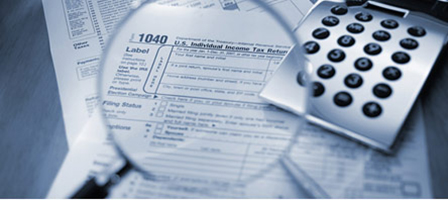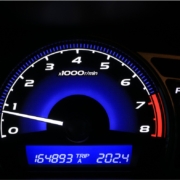TAX REFORM DEALT TEACHERS A RAW DEAL
Article Highlights:
- $250 Above-the-Line Teachers’ Deduction
- Eligibility for the $250 Deduction
- Tax Benefit
- Deduction Option
- Charitable Option
It is quite common for teachers to spend their own money on classroom supplies – so common, in fact, that a few years back, Congress created a special deduction that allowed teachers to deduct up to $250 above-the-line for classroom supplies. “Above-the-line” means the deduction can be claimed whether or not the taxpayer itemizes their deductions. Although the $250 amount is subject to an inflation adjustment, there has been no increase to the limit, at least through 2018.
Eligible educators are those who work in a school as teachers of kindergarten through grade 12, instructors, counselors, principals, or aides for at least 900 hours during a school year. Because of the 900-hour requirement, many substitute teachers do not qualify for this above-the-line deduction.
But $250 is not much, and even if the teacher is in a tax bracket as high as 24% (most are in lower brackets), the deduction will only net them a tax savings of $60. A $60 tax savings is nothing to write home about, and the $250 special deduction was nothing more than a token gesture by Congress. Many conscientious teachers spend far more than $250 for classroom supplies every year.
There were two other ways that teachers could deduct classroom supplies. One was to deduct their costs as an employee business expense, as part of miscellaneous itemized deductions, provided the teacher had enough other deductions to itemize, as opposed to taking the standard deduction. Even so, the miscellaneous deductions category into which employee business expenses fall had to be reduced by 2% of the teacher’s adjusted gross income, which reduced the amount of expenses that could be deducted. For example, a teacher with an AGI of $50,000 would lose the first $1,000 (2% of $50,000) of his or her deduction. But that no longer makes any difference, since the tax reform prohibits the deduction for employee business expenses though 2025, eliminating this option for teachers as of 2018.
The third option is to treat the classroom supplies as a charitable contribution. Tax law specifies the term “charitable contribution” as including a contribution or gift to or for the use of a state, a possession of the United States, or any political subdivision of any of the foregoing, the United States or the District of Columbia, but only if the contribution or gift is made for exclusively public purposes. This option as a way to deduct classroom supplies is limited to public school teachers, since public schools are part of a political subdivision of a state government, which is not true of private schools.
But even though tax law permits a charitable contribution for classroom supplies, getting the required substantiation from the school or the school district may be the biggest hurdle of all. School policies more than likely require teachers to be reimbursed for ordinary and necessary supplies used in the school, and the school’s legal counsel may advise them not to provide any substantiation out of fear of lawsuits seeking reimbursement for the classroom supplies.
However, if a teacher is able to overcome that barrier, the teacher can claim the classroom supplies as a noncash charitable contribution, if the teacher properly documents them and the school provides a written acknowledgment. Caution: Supplies or equipment that the teacher retains would not be considered a completed gift, and their cost would not qualify as a charitable contribution. For example, if a science teacher purchases a microscope that students use in the classroom but keeps it for personal use when the school year ends, the cost of the microscope would not be deductible as a charitable contribution.
To meet the requirements for noncash contributions, the teacher claiming a contribution to the school must obtain and keep an acknowledgment from the school or the school district; the contents of this acknowledgement are based upon the value of the claimed contribution, as detailed below. The acknowledgment must be in the taxpayer’s possession before filing his or her return for the year the contribution was made or before the due date, including extensions, for filing that return – whichever is earlier.
- Deductions of Less Than $250 – These deductions must include:
1. The name of the charitable organization,
2. The date and location of the charitable contribution, and
3. A reasonably detailed description of the property.
- Deductions of at Least $250 but Not More Than $500 – These deductions must include:
1. The name of the charitable organization,
2. The date and location of the charitable contribution,
3. A reasonably detailed description (but not necessarily the value) of any property contributed, and
4. Whether the qualified organization gave the taxpayer any goods or services as a result of the contribution (other than certain token items and membership benefits).If goods and/or services were provided to the teacher, then the acknowledgement must also include a description and good-faith estimate of their value.
- Deductions over $500 but Not over $5,000 – A taxpayer claiming a deduction over $500 but not over $5,000 for a noncash charitable contribution must have the same acknowledgement and written records as for contributions of at least $250 but not more than $500, as described above. In addition, the records must include:
1. How the property was obtained (for example, by purchase, gift, bequest, inheritance or exchange);
2. The approximate date the property was obtained or (if created, produced or manufactured by the taxpayer) substantially completed; and
3. The cost or other basis, and any adjustments to that basis, of property held for less than 12 months and, if available, the cost or other basis of property held for 12 months or more. - Deductions over $5,000 – It is unlikely that most teachers would be donating property valued at this level, but if such a contribution were made, the donor needs to obtain a qualified appraisal of the property. Please contact this office for details.
If you have questions related to classroom supplies and the possibility of deducting them as a charitable contribution, please call.








Leave a Reply
Want to join the discussion?Feel free to contribute!